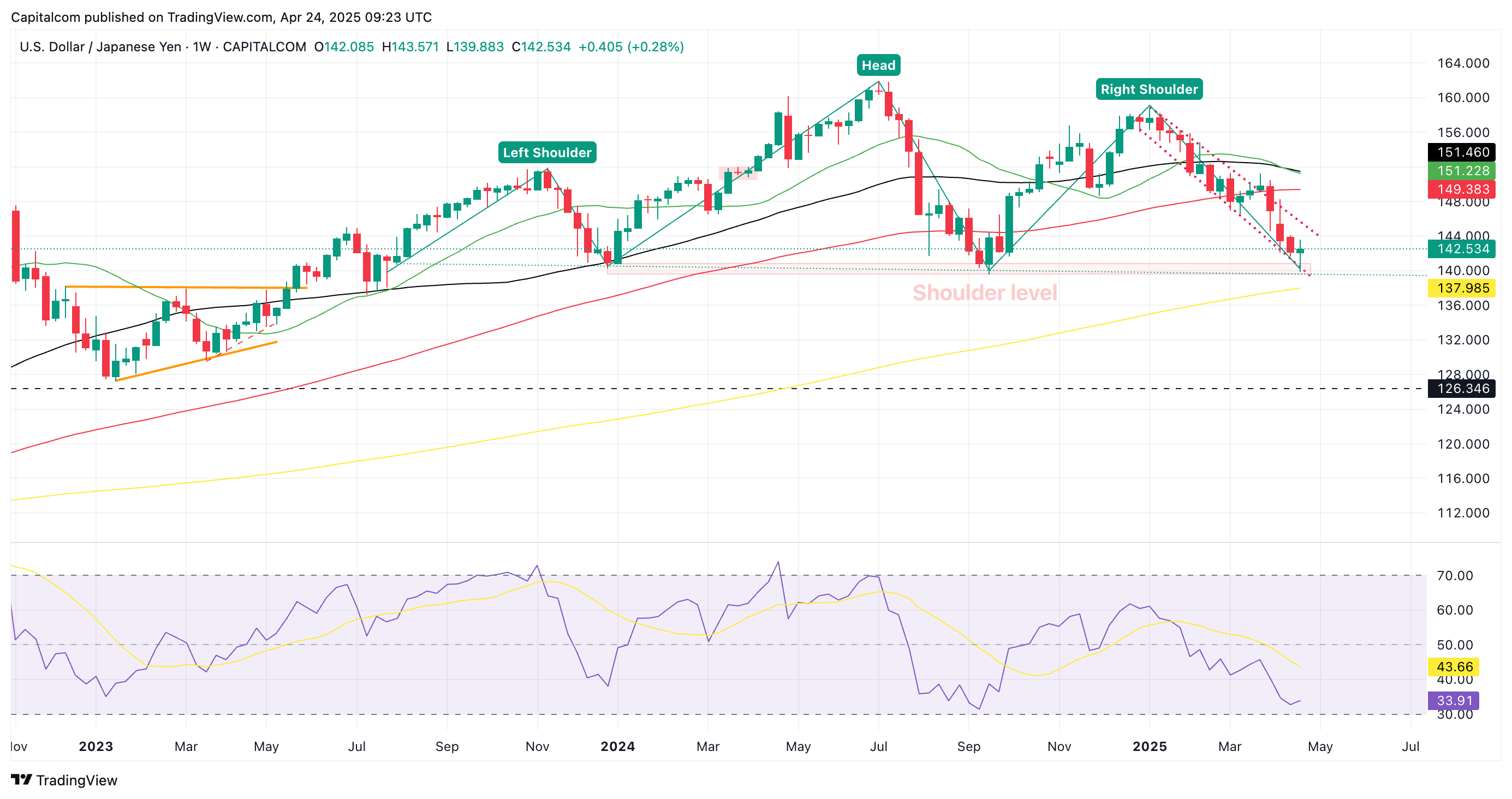USD/JPY teeters at key support as head-and-shoulders pattern develops
USD/JPY attempts to complete a head-and-shoulders pattern but the neckline continues to offer support
USD/JPY has rebounded from a critical support level — the neckline of a developing head-and-shoulders pattern. This classic technical formation is widely regarded as one of the most reliable indicators of a bullish-to-bearish reversal. However, for the pattern to complete, the pair must decisively break below the shoulder level near 140 after forming the right shoulder. Recent price action suggests that this area is continuing to offer solid support, delaying a potential breakdown.
USD/JPY weekly chart
 Past performance is not a reliable indicator of future results.
Past performance is not a reliable indicator of future results.
While the head-and-shoulders structure remains in play, a prolonged move away from the 140 level would reduce the likelihood of a full reversal materializing. For now, price activity remains relatively close to this key area, preserving the pattern's integrity.
Adding to the bearish technical bias, USD/JPY has also been trading within a descending channel for the past four months. This channel underscores the broader downside pressure but also provides intermittent support along the lower trendline — which, in turn, slows the completion of the head-and-shoulders formation. A clean break below the channel would reinforce a more pronounced bearish outlook.
USD/JPY daily chart

Past performance is not a reliable indicator of future results.
The dollar received a modest boost earlier this week on reports that Trump may be softening his stance toward China, sparking hopes for renewed negotiations. Still, the broader outlook remains clouded by uncertainty. As expectations grow for the Federal Reserve to cut rates later this year, the US dollar continues to lose its edge, and the narrative of “US exceptionalism” fades.
On the other side of the trade, the Japanese yen continues to benefit from its safe-haven status. With global instability rising, the yen has found strong demand, often driven more by international developments than domestic fundamentals — a trend likely to persist in the near term.